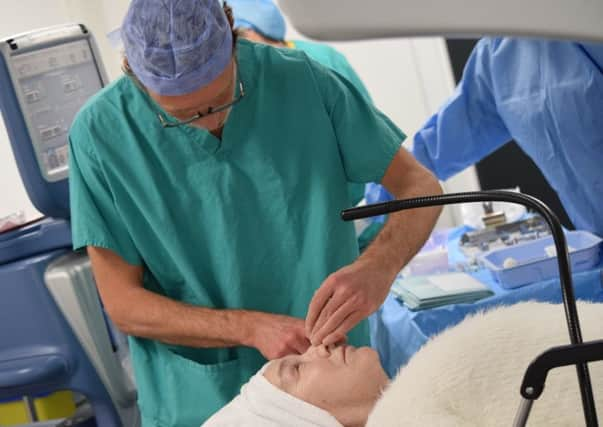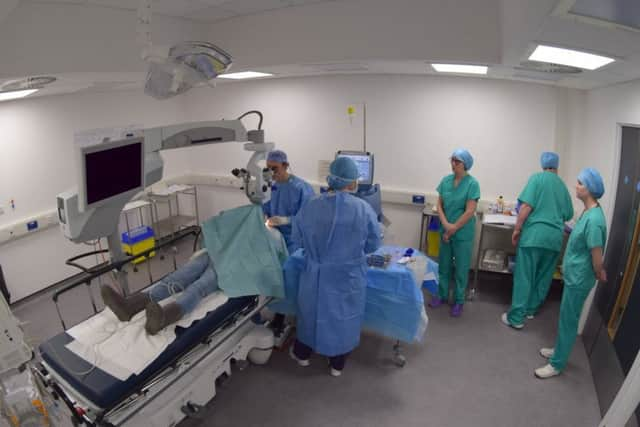Fife cataract patients benefit from new ‘Jack & Jill’ theatre


The demand for surgery has increased considerably over recent years.
Around 3,000 cataract procedures are carried out each year in Fife – and this is expected to rise to 3,500 by 2022/23.
Advertisement
Hide AdAdvertisement
Hide AdUntil very recently there was only one cataract theatre in Fife and keeping up with the increasing demand meant providing weekend waiting list theatres, and in some cases meant patients travelling to Glasgow for their out-patient appointment and treatment.


You may also be interested in:
A decision was taken to increase capacity by adding an additional theatre to run side-by-side with the existing treatment area at Queen Margaret Hospital, Dunfermline, creating what is known as a ‘Jack and Jill’ theatre, at a cost of more than £560,000.
This enables a single surgeon to work simultaneously across two adjoining theatres and allows nursing staff to prepare the patient. Once the procedure is complete, nursing staff can prepare the theatre for the next patient as the surgeon moves on to the adjoining procedure room to start the next case.
Advertisement
Hide AdAdvertisement
Hide AdThe ‘Jack and Jill’ model is already used successfully by high volume units in other parts of the UK and the new arrangement will create additional capacity for around 500 cases every year with scope to increase this further as demand increases.
Dr Shona Sutherland, consultant ophthalmologist, said: “Fife’s Ophthalmolgy Service has long prided itself on offering a cataract service that is second-to-none.
“Despite year on year improvements in the efficiency of the service, the demand over recent years has meant that we could not treat all patients requiring cataract procedures locally, or offer the level of flexibility that we once did.
“It was crucial that we found a more sustainable means of providing cataract surgery for patients, and the changes we have made enable us to do exactly that.”